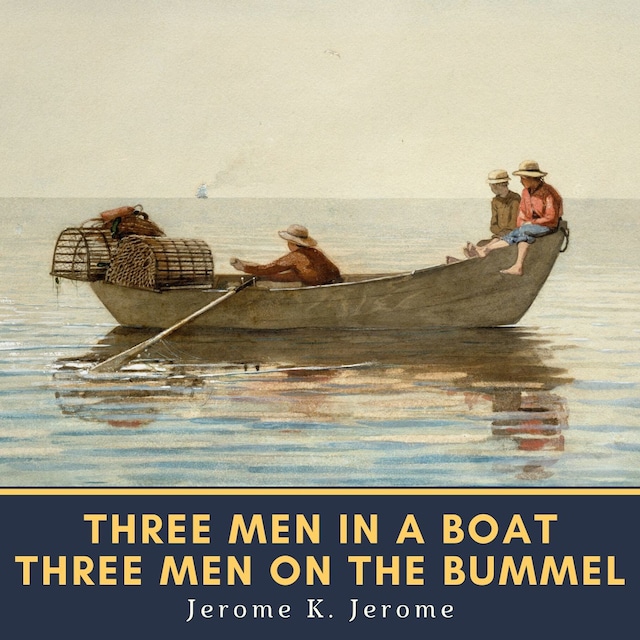
Three Men in a Boat & Three Men on the Bummel
Description of book
Three Men in a Boat (To Say Nothing of the Dog), published in 1889, is a humorous account by English writer Jerome K. Jerome of a two-week boating holiday on the Thames from Kingston upon Thames to Oxford and back to Kingston. The book was initially intended to be a serious travel guide, with accounts of local history along the route, but the humorous elements took over to the point where the serious and somewhat sentimental passages seem a distraction to the comic novel. One of the most praised things about
Three Men in a Boat is how undated it appears to modern readers - the jokes have been praised as fresh and witty. The three men are based on Jerome himself (the narrator Jerome K. Jerome) and two real-life friends, George Wingrave (who would become a senior manager at Barclays Bank) and Carl Hentschel (the founder of a London printing business, called Harris in the book), with whom Jerome often took boating trips. The dog, Montmorency, is entirely fictional but, "as Jerome admits, developed out of that area of inner consciousness which, in all Englishmen, contains an element of the dog". The trip is a typical boating holiday of the time in a Thames camping skiff. This was just after commercial boat traffic on the Upper Thames had died out, replaced by the 1880s craze for boating as a leisure activity.
Three Men on the Bummel (also known as
Three Men on Wheels) is a humorous novel by Jerome K. Jerome. It was published in 1900, eleven years after his most famous work,
Three Men in a Boat (To Say Nothing of the Dog). The sequel brings back the three companions who figured in
Three Men in a Boat, this time on a bicycle tour through the German Black Forest. D. C. Browning's introduction to the 1957 Everyman's edition says "Like most sequels, it has been compared unfavourably with its parent story, but it was only a little less celebrated than
Three Men in a Boat and was for long used as a school book in Germany." Jeremy Nicholas of the Jerome K. Jerome Society regards it as a "comic masterpiece" containing "set pieces" as funny or funnier than those in its predecessor, but, taken as a whole, not as satisfying due to the lack of as strong a unifying thread.


